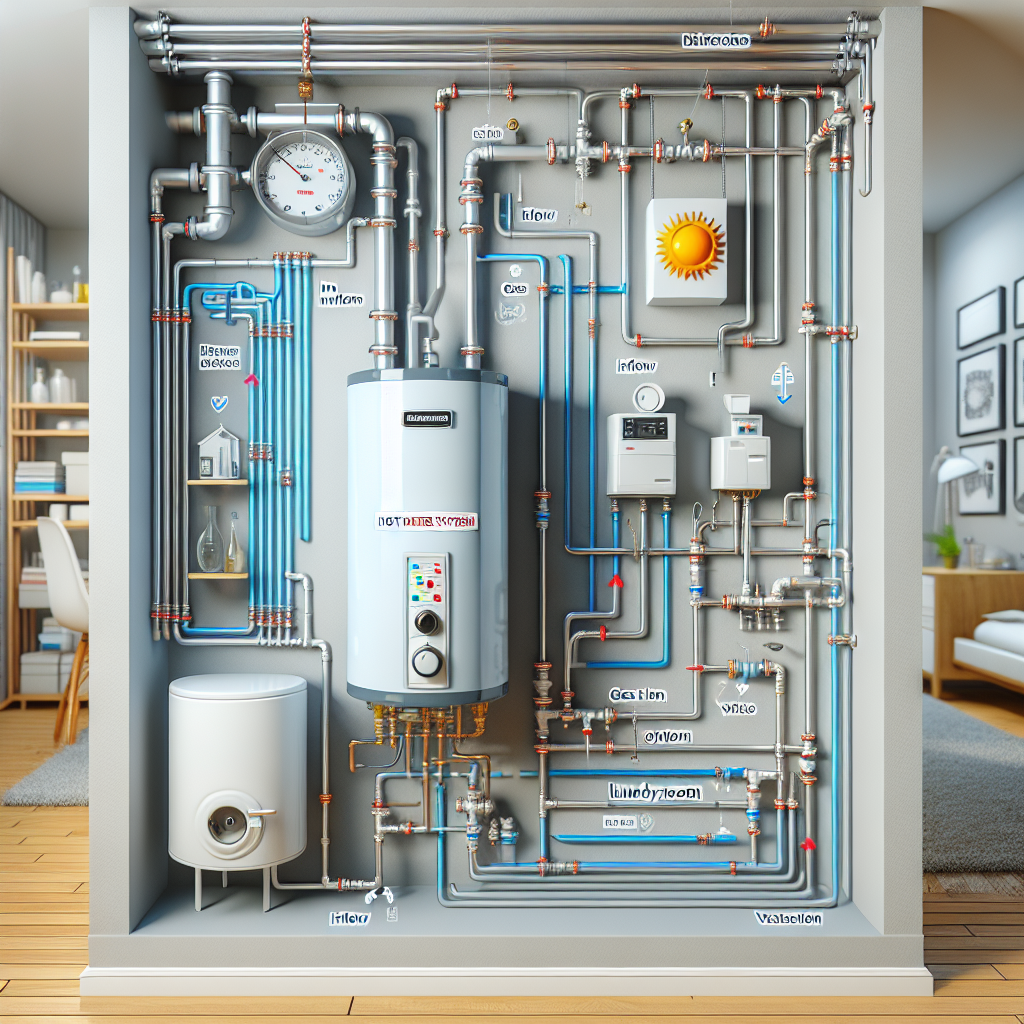Maintenance Tips to Extend the Lifespan of Your New Hot Water System
Your new hot water system represents a significant investment, and taking care of it is essential to ensure it serves you well for years to come. Regular maintenance not only prolongs its lifespan but also ensures that it continues to operate efficiently, saving you money on energy bills and potential repair costs.

Regular Maintenance Checks
One of the fundamental aspects of maintaining a new hot water system is conducting regular checks. These checks help identify any issues early on, allowing you to address them before they become major problems. Make it a habit to inspect your system periodically for signs of wear and tear.
Regular checks involve looking for visible signs of trouble, such as rust, corrosion, or water leaks. Inspect the pressure relief valve for any signs of damage or malfunction. Additionally, listen for unusual noises coming from the tank, as this could indicate a problem with the heating element or sediment buildup.
Cleaning and Flushing
Over time, sediment and mineral buildup can occur inside your hot water tank. This buildup can reduce the system’s efficiency and even lead to corrosion. To prevent this, it’s essential to clean and flush your system regularly.
The cleaning process involves draining the tank and removing any sediment that has settled at the bottom. Begin by turning off the power supply to the hot water system and shutting off the cold water supply. Attach a hose to the tank’s drain valve and empty the tank completely. Be prepared for sediment-laden water to flow out.
Once the tank is empty, close the drain valve and fill the tank again. Repeat this process until the water runs clear. Flushing your system annually can significantly extend its lifespan and maintain its efficiency.
Temperature and Pressure Control
Proper temperature and pressure are crucial for the safe and efficient operation of your hot water system. Ensure that the temperature is set within a safe and comfortable range, typically around 120 degrees Fahrenheit (49 degrees Celsius). This temperature setting not only prevents scalding but also reduces the risk of mineral buildup.
In addition to temperature, monitor the pressure regularly. Ideal pressure varies depending on your location, but it should typically fall between 40 and 60 psi. You can use a pressure gauge to check the pressure and adjust it as needed to prevent damage to the system and maximize its lifespan.
Anode Rod Replacement
Anode rods play a vital role in protecting your hot water tank from corrosion. These sacrificial rods corrode in place of your tank, extending its life. Check the condition of the anode rod periodically, ideally every two to five years, depending on your water quality and usage.
If the anode rod is significantly corroded or has worn down to about half its original size, it’s time for a replacement in your new hot water system. Replacing the anode rod is a relatively simple process. First, turn off the power and water supply to the hot water system. Locate the anode rod’s access point on top of the tank and remove it using a wrench or socket set. Install a new anode rod and tighten it securely. This routine maintenance step ensures the continued protection and longevity of your new hot water system.
Sediment Removal
As mentioned earlier, sediment buildup can be detrimental to your hot water system. Sediment can settle at the bottom of the tank, insulating the heating element and reducing efficiency. Learn how to flush out sediment effectively to maintain the system’s performance.
To remove sediment, follow the steps mentioned in the cleaning and flushing section. Regularly flushing out sediment prevents it from accumulating and helps your system operate efficiently.
Leaks and Drips
Even a small leak in your hot water system can lead to significant water wastage and potential damage. Inspect your system for any leaks or drips and address them promptly. A leaking system not only wastes water but can also cause structural damage over time.
Check the connections and valves for any signs of leakage. If you notice a leak, turn off the power and water supply to the system immediately. Depending on the severity of the leak, you may need to replace a faulty valve or call a professional plumber to fix the issue.
Insulation and Energy Efficiency
Proper insulation around your hot water tank can help it retain heat better, reducing the workload on the heating element. This not only extends the system’s lifespan but also lowers your energy bills. Consider insulating your tank if it’s not already done.
You can insulate your hot water tank with a specially designed insulation blanket. These blankets are readily available at hardware stores and are relatively easy to install. Ensure that you follow the manufacturer’s instructions and safety guidelines when adding insulation to your tank.
Professional Maintenance
While many maintenance tasks can be performed by homeowners, it’s advisable to seek professional assistance periodically. A professional can conduct a comprehensive inspection and maintenance, ensuring that your hot water system is in the best possible condition.
Professional maintenance typically includes a thorough examination of the tank, its components, and the heating element. They can also assess the overall condition of the system and recommend any necessary repairs or replacements.
In conclusion, taking care of your new hot water system is essential to ensure its longevity and efficiency. By following these maintenance tips, you can enjoy hot water in your home for many years without the worry of unexpected breakdowns or high energy bills. Regular checks, cleaning, and occasional professional maintenance will go a long way in keeping your new hot water system in top shape.
Maintenance Tips to Extend the Lifespan of Your New Hot Water System Read More »

